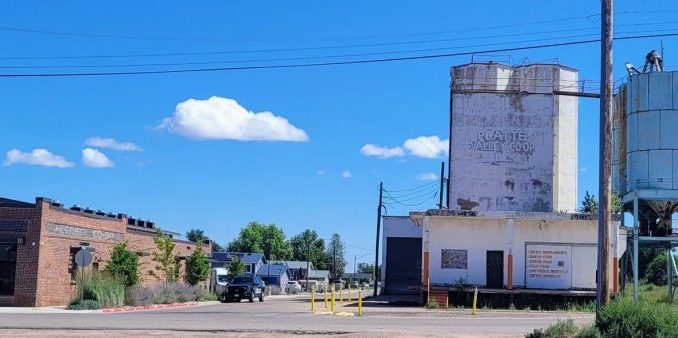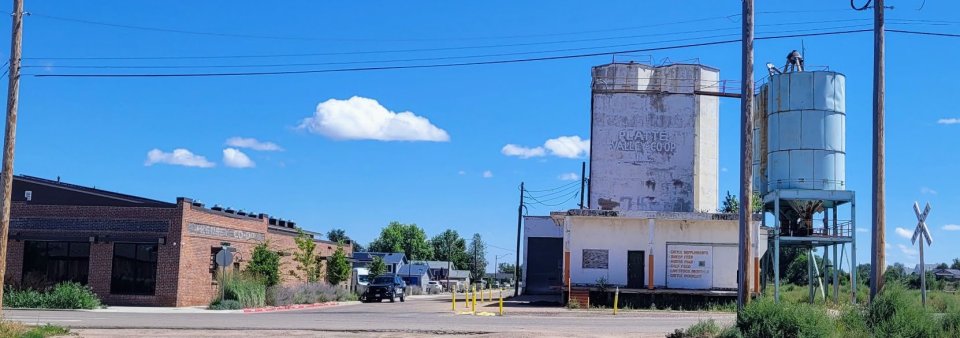
Greeley, Colo. – Today the U.S. Environmental Protection Agency (EPA) announced more than $1.6 million in Brownfields grant funding to support the environmental assessment, cleanup and redevelopment of critical properties in the communities of Greeley and Kersey in Weld County, Colorado. The City of Greeley will receive $500,000 to assess several priority properties in the downtown Railway District and the Town of Kersey will receive $1,132,899 to cleanup and redevelop the former Union Pacific Railroad Grain Elevator property.
These investments are part the agency’s Brownfields Multipurpose, Assessment, and Cleanup (MAC) Grant Programs.
“EPA’s Brownfields grants are helping community leaders revitalize downtown areas through the transformation of blighted properties,” said EPA Regional Administrator KC Becker. “Today’s funding will help reclaim contaminated buildings, soil, water and outdoor spaces and create new economic opportunities in Greeley and Kersey.”
“In the wealthiest nation in the world, every family should be able to live in a clean environment,” said Senator Michael Bennet. “This funding will rightfully support Colorado communities disproportionately affected by contamination. These grants will help Colorado communities safely clean up polluted sites, protect their health, and rebuild in a way that creates jobs and economic opportunity.”
City of Greeley: $500,000
The City of Greeley will use EPA Brownfields funding to assess environmental contamination at targeted properties in the Railway District, Central Downtown and University Uptown.
Key properties include the 2.5-acre former Clarion Hotel/Quality Inn with legacy uses on the property including a former laundry and paint supply store, as well as a lime and cement company concerns persist about dioxins, furans, PAHs, heavy metals, petroleum hydrocarbons and asbestos and lead-based paint. The former Allnut Funeral Home at 702 13th Street, is also a prime spot for redevelopment, with the potential presence of asbestos, lead-based paint, and toxins related to embalming preservation fluids such as formaldehyde, menthol, phenol and glycerin hindering redevelopment. Gasoline stations and auto repair shops, either current or previously existing, border the property on three sides, creating petroleum contamination concerns.
“In the City of Greeley’s continuous journey to shape our shared dream, the creation of beneficial buildings and urban spaces that cater to the needs of the future while showcasing pioneering urban design is of utmost importance,” said Mayor John Gates. “EPA Brownfields will be our guiding light in realizing these ambitions and charting our course of action. We are filled with anticipation for these initial strides and are filled with hope that a partnership for the ages is being crafted today, for a brighter and better community for our future generations.”
“I am so excited for this support from the EPA Brownfields program,” said Tommy Butler, Council Member Ward I. “Greeley is proud of our agricultural and industrial roots. Our vision for the city is to honor those roots while building a vibrant, modern city. This support will help us focus on high-quality development that ensures a sustainable and innovative future for all the amazing folks that live in our community.”
“The support from the EPA Brownfields program fuels the City of Greeley with the power to identify and assess potential sites within our historic redevelopment area that may face significant challenges to private investment,” said Raymond Lee III, Greeley City Manager. “Our partnership with EPA Brownfields signifies a monumental leap forward in bringing our vision for the Riverside and Railside sections of our urban heart to life. We are a city that embraces the future, and we are thrilled to collaborate with EPA on this esteemed program.”
EPA funds will also be used to assess the 100-acre Wake Park and Recreation District, an old oil and gas yard adjacent to the Poudre River and U.S. 85 and 6th Avenue. Environmental concerns include the presence of several junkyards with vehicles potentially leaking petroleum into the soil. The site also hosted tire storage and agricultural feed/fertilizer facilities and oil and gasoline extraction, refinement and storage equipment. The community is concerned about potential petroleum hydrocarbons, chlorinated solvents, heavy metals, pesticides, herbicides and other contaminants in soils.
Additional sites to be addressed include the vacant Distinctive Furniture building, with potential surface contamination from diesel and coal freight activity from over a century of use. Concerns include coal particulates, asbestos, lead-based paint, petroleum hydrocarbons, chlorinated solvents and heavy metals. Former grain elevator sites on 6th Street and 10th Street will also be assessed for lead-based paint and asbestos. Another target site, the Wholesale Plywood and Lumber property adjacent to Jefferson Junior High School will be evaluated for asbestos and lead-based paint, as well as contaminants associated with vehicle repair, including volatile organic compounds, petroleum hydrocarbons and chlorinated solvents.
Potential reuse options for this slate of properties include new hotels, apartments and affordable housing, artist studio spaces, sports facilities, multi-use trails, indoor markets, distilleries and breweries and a cultural arts and community center.
Town of Kersey: $1,132,899
The Town of Kersey will use the EPA Brownfields grant funding to cleanup the former Union Pacific Railroad Grain Elevator, which sits on a 2-acre two-acre lot in the heart of downtown. The dilapidated building is blighted by pigeon guano, water damage and asbestos contamination, posing a safety hazard and preventing investment. The cleanup will transform the property into a vibrant destination, including a restaurant and brewery.
“We are very thankful to be receiving this Brownfield Grant from the EPA to remediate our old grain elevator,” said Mayor Gary Lagrimanta. “This project is not just about restoring a landmark structure; it’s about safely revitalizing an existing building for future use.”

State Funding Breakdown
Brownfields Multipurpose, Assessment, and Cleanup (MAC) Grant Program Selection
Greeley and Kersey are among six organizations in Colorado have been selected to receive EPA Brownfields funding through the Multipurpose, Assessment, and Cleanup (MAC) Grant Programs. Additional grantees announced today include:
-
The City of Northglenn, Colorado has been selected to receive $2,750,000.
-
Metro West Housing Solutions has been selected to receive $500,000.
-
The City of Pueblo, Colorado has been selected to receive $1 million.
-
The City of Monte Vista, Colorado has been selected to receive $1,000,000.
Additional Background
EPA’s Brownfields Program advances President Biden’s Justice40 Initiative which set a goal that 40% of the overall benefits of certain Federal investments flow to communities that are marginalized by underinvestment and overburdened by pollution. Approximately 86% of the MAC and RLF Supplemental program applications selected to receive funding proposed to work in areas that include overburdened communities.
EPA’s Brownfields Program began in 1995 and has provided nearly $2.7 billion in Brownfield Grants to assess and clean up contaminated properties and return blighted properties to productive reuse. Prior to the Bipartisan Infrastructure Law, this program made approximately $60 million available each year. Thanks to the President’s historic investments in America through the Bipartisan Infrastructure Law, EPA has now increased that yearly investment nearly 400 percent.
To see the list of the FY 2024 Multipurpose, Assessment and Cleanup applicants selected for funding visit EPA’s FY 2024 Multipurpose, Assessment and Cleanup Applicants webpage.
For more information on EPA’s Brownfields Program visit EPA’s Brownfields webpage.
